Nov 11, 2020 | Brian Li ('22), Summer Experiences
After witnessing the far-reaching and debilitating effects of the COVID-19 pandemic on our communities, a group of Pingry students, public school students, and I looked on anxiously, wondering if anything could be done to help alleviate this dire situation. With virtually all schools going remote during the pandemic, many students did not receive the same quality of education that they usually would have, stunting their learning and putting them at a disadvantage compared to their peers. We wanted to help such students continue to learn and enrich them with knowledge that could benefit them down the road.
Thus, STEMinPlace was born: a group of high schoolers who wanted to help the community during the COVID-19 pandemic by providing high-quality, free, interactive, and fun learning opportunities for middle schoolers. “STEMinPlace started as just an idea; I knew I had the goal of teaching middle schoolers these STEM topics, but I wasn’t sure how to get there,” founder Ryan Arrazcaeta (V) stated. After forming a team and creating our website (steminplace.com), we decided on a structure for our program that would effectively educate our students and set us apart from similar organizations. By offering six STEM courses––Chemistry, Physics, Computer Science, Astronomy, Genetics, and Game Theory, we hoped to provide students with various courses that they could choose from, stimulating their interest and potentially sparking a passion for a subject that they were previously unaware of. In addition, we invited guest speakers every week to demonstrate how these topics apply in the real world.
While the structure of our program was coming to fruition, we were worried about raising awareness. Finding enough students for a fledgling organization seemed nearly impossible. We reached out to family and friends to spread the word, unsure if we would even have 10 students. One day, to our surprise, we checked the responses to our signup form and saw over 100 registrations and counting. This shock quickly turned to horror as we were initially overwhelmed by this sudden influx of students. Nevertheless, we adjusted our curricula, prepared for a much more exciting than we previously imagined, and with our combined teamwork, successfully taught just short of 1000 students over the course of six weeks.
Our classes and commitment to education were much appreciated by our students and their families. In part, we continued to receive more signups because of students and parents recommending our program to others. They also expressed their gratitude by commenting on our program. One said, “Volunteer high school kids pulled off remote learning better than the paid professionals at my kids’ private school. What more can I say? Amazing.” Several parents offered donations, but we asked them to donate to other organizations with similar missions, namely the “I Have a Dream” Foundation, Teaching Matters, and the Michael Aymar Foundation.
STEMinPlace has also been an enriching experience for our team. We learned how to run an organization, developed valuable leadership and educational skills, and for some of us, gained a passion for teaching and community service. Connor Chen (V) discovered that he “thoroughly enjoyed teaching others about topics that [he] knew a lot about and realized that sharing [his] knowledge with others is very gratifying. [He] also learned how management works behind the scenes and gained valuable experience in how to run a program with a motivated team to work alongside [him].” We hope we helped our communities in any way possible and provided students with an education that they will never forget.
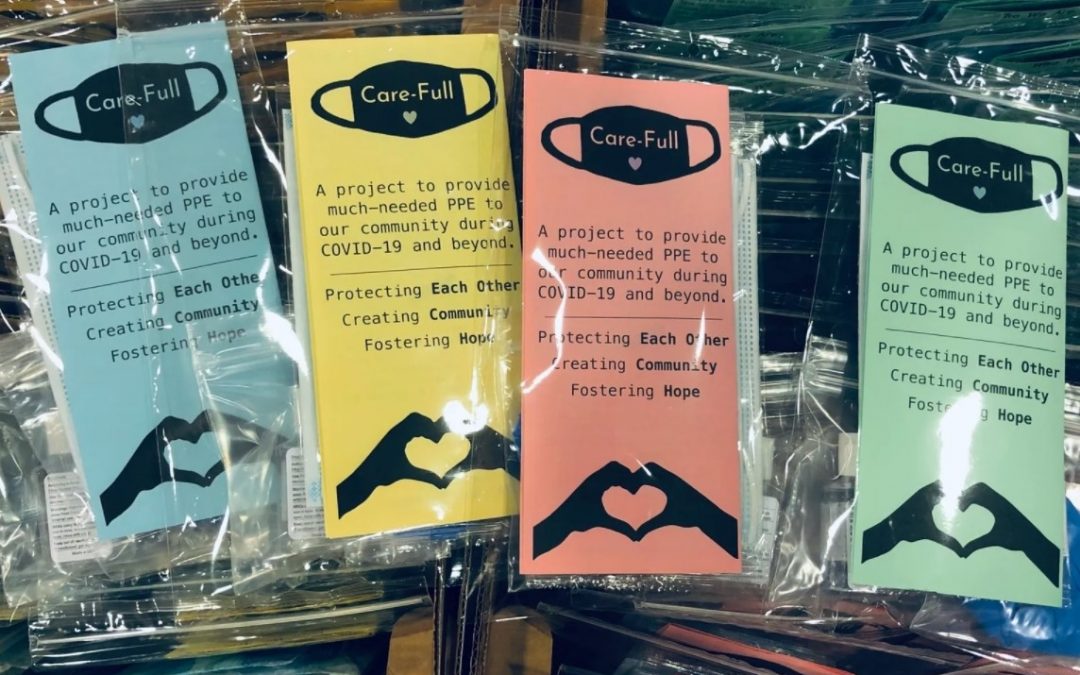
Nov 2, 2020 | Andrew Wong, Featured, Summer Experiences
By Andrew Wong (V)
This past May, with the COVID-19 pandemic still raging, Noah Bergam (VI), Kristin Osika (V), Eva Schiller (VI), and myself formed an organization called Care-Full to distribute PPE to underserved communities around New Jersey. With the new health and economic challenges brought on by the pandemic, we knew many in our local communities would be struggling financially and might not have access to masks, gloves, and hand sanitizers, and this problem would only be exacerbated in the next months. Rather than sitting back and watching, we took action, creating a plan to supply these necessities to the community.
We decided to create care packages consisting of a 30 mL bottle of hand sanitizer, three individually wrapped face masks, a pair of disposable gloves, and an originally designed pamphlet on how to stay safe during the pandemic. We all drew upon our various unique skill sets and connections to accomplish this task. Noah and Eva used their publishing experience to create advertising materials, Kristin reached out to various organizations for deliveries and donations, and I organized assembly sessions at Pingry to collect PPE and make our care packages. Our combined teamwork over the course of the summer allowed us to make and donate over 1,900 care packages, while raising almost $3,500 toward the creation of more packages.
Our care packages were gladly received by many in our local community. We donated to a variety of charity organizations, such as the Interfaith Food Pantry, NourishNJ, the Visiting Nurses Association of NJ, Market Street Mission, and various other nursing homes and churches across New Jersey. Helping the community through Care-Full has been especially rewarding for the team.
As America reopens, PPE is mandatory in most public settings; those without a mask are barred from entry to stores and small businesses. Those who lack access to PPE face limited entry into these public spaces, and thus necessities such as groceries might be difficult to come by. Additionally, going to work or buying food can be stressful for those who lack proper protection against COVID-19. By providing PPE in these care packages, they ensure that everyone – no matter their socioeconomic status, risk factors, or age – can visit public locations and go outside without difficulty or fear.
To continue these vital efforts and sustain their ability to provide PPE, Care-Full needs the help of everyone in the community. The Care-Full team is currently researching ways to raise awareness in order to create and distribute more care packages. Anyone can make a monetary donation by clicking the link on their website at care-full.org, or clicking the links on our Instagram (@we_are_carefull) pages. We can also be reached via email at 2020.carefull@gmail.com. All donations go directly to the making of care packages: just $2 can supply a care package to someone in need!
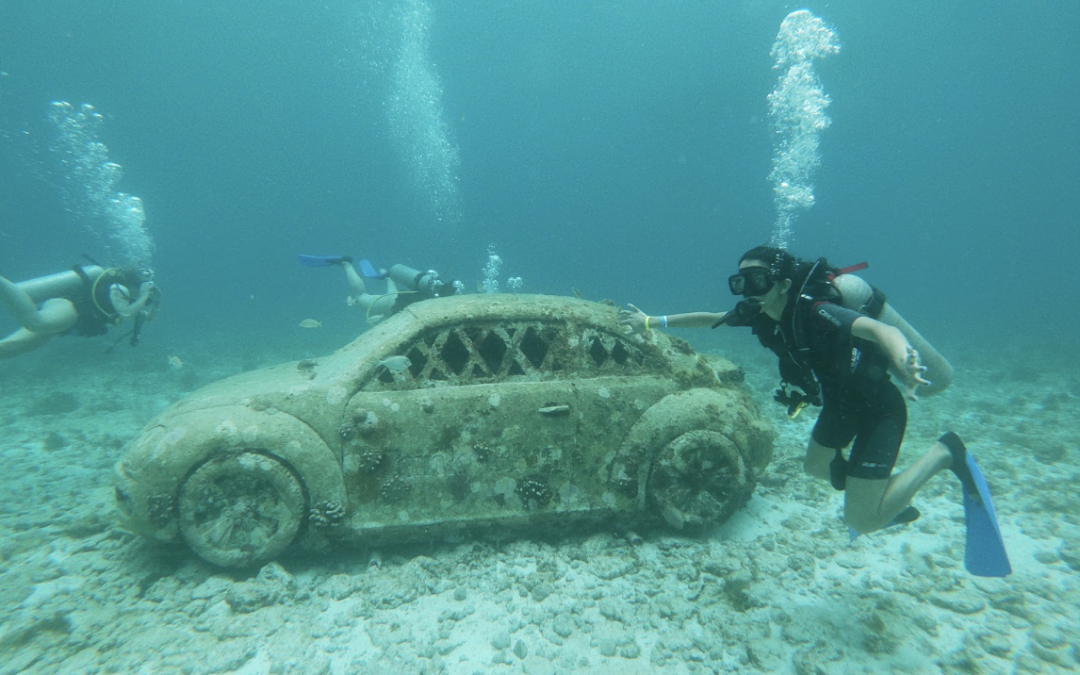
Oct 18, 2019 | Summer Experiences
Anjali Kapoor (VI)
This summer, I was able to learn about two of my favorite subjects outside of the classroom. I interned at an orthopedics lab where I was exposed to a whole new side of biology research, and I traveled to Spain and Cancun to immerse myself in Spanish culture.
I spent most of my summer interning at Dr. O’Connor’s orthopedics lab at Rutgers Medical School. I had conducted microbiology research in the past, but this was my first time working with something larger than a cell––a mouse.
I also learned about the many different projects occurring in the lab. One Ph.D. student was working on improving the efficiency of bone allografts, a surgical procedure that repairs missing pieces of a bone. I watched her perform numerous rat surgeries, in which she anesthetized the rat, cut out a piece of the femur bone, filled the gap with bone chips and a variable treatment, and then stitched up the rat. It was fascinating to watch the surgery because it was just like a human surgery, just on a much smaller scale. After a number of weeks, we would X-ray the rat to determine how well the bone was healing. I helped by examining X-rays and creating, staining, and analyzing microscope slides of bone slices. This research could identify treatments that can be used to expedite bone healing for human bone injuries.
Another scientist was working on perfecting the technology to track the flexion of a rabbit in 3D space. She walked me through a giant set up of multiple x-ray machines and cameras. Together, these machines tracked the movement of titanium beads, which she had inserted into the rabbit spine. It was amazing to see this extremely integrated application of math, biology, and technology. This novel experiment has the potential to help us understand the movement and coordination of different bones in the body, such as the bones in our ear canal, which scientists currently do not completely understand.
Most of my research this summer focused on trying to better understand the role of COX-2, a protein involved in bone formation. The lab was particularly interested in this protein because over-the-counter painkillers inhibit its function, and as a result, may be simultaneously impairing bone healing. Understanding this individual protein’s function could also give insight into the broader connection between inflammation and bone healing.
After the completion of my internship, my family traveled to Cancun and Spain. After studying Spanish for the past seven years, I was excited to finally travel to the countries I had learned so much about. In Cancun, my favorite experience was scuba diving at the Underwater Museum of Art. The museum grew out of an idea a non-profit organization had twenty years ago to preserve the coral reefs: they submerged the art of five Mexican sculptors as an alternative site for divers. It was mesmerizing to see how statues of humans and cars had transformed into habitats for marine life. In Spain, my breath was taken away upon entering La Sagrada Familia, a cathedral designed by Antoni Gaudí that is still being built, 137 years after work commenced. The colored stained glass walls created a magical rainbow glow in the room.
Ultimately, I had a very memorable and thought-provoking summer. On the one hand, I got to learn new research methods, utilize cutting-edge lab technology, and, in a small way, contribute to the future of orthopedic medicine. On the other hand, I was able to improve my Spanish speaking skills and experience Spanish culture while exploring two unique countries.
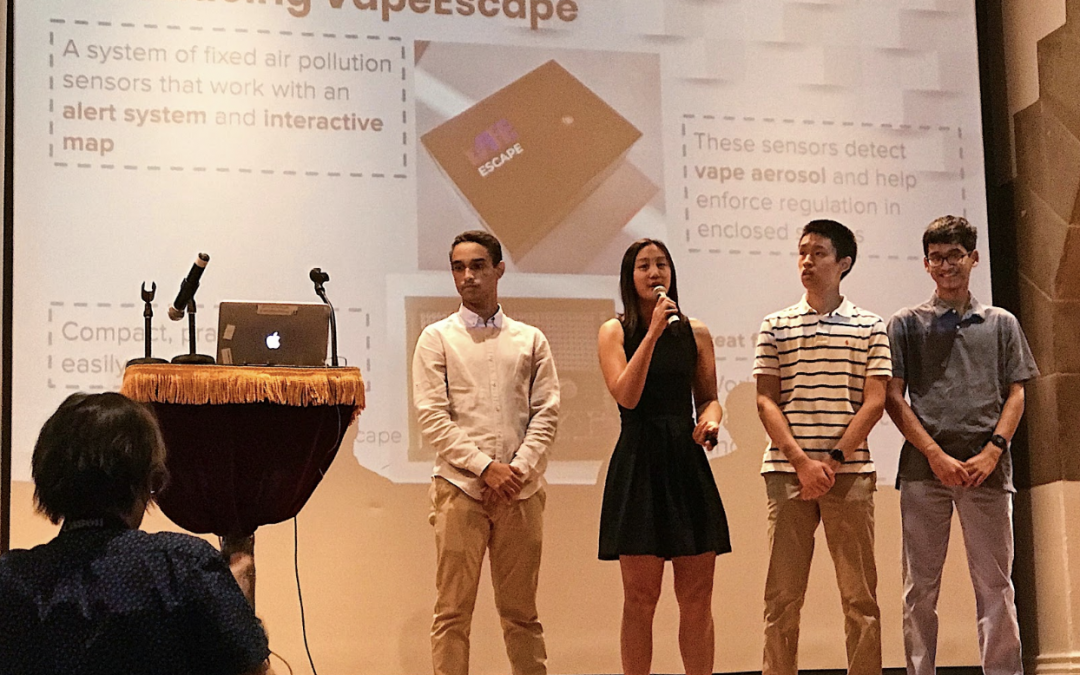
Oct 18, 2019 | Summer Experiences
Emma Huang (V)
For six weeks this summer, I had the opportunity to work in Cooper Union’s Summer STEM Makerspace Program. Filled with 3-D printers, plasma laser cutters, and soldering and circuit stations, the Makerspace was an innovator’s dream – a place where I could turn an idea into a reality. Each day, I designed, coded and prototyped. In addition to working in the Makerspace, we participated in business and entrepreneurship workshops, which included public speaking, a STEM career advice panel, and a Computer Science and Ethics discussion group. We also received lessons on how to build circuits using Arduinos (a platform for building prototypes) and how to use OnShape (a CAD, or computer aided design, software) to create 3-D models. We were tasked to identify a real-world problem, devise an invention which would address it and then pitch our ideas. I set on developing a prototype to help solve a public health crisis we face.
It was during my daily commute on the train into New York City where I saw a recurring theme. While exiting Penn Station each day, clouds of vape aerosol and cigarette smoke filled my line of sight. One morning, I even saw a mother hurriedly swerve her stroller away from the fumes and turn her children’s heads away from the smoke. As I continued to navigate my way down to lower Manhattan on the subway, I witnessed similar situations occur. In each instance, the second-hand smoke affected everyone. This made me think about that infant in the stroller, the elderly man next to me, and all the people around who are susceptible to the effects of second-hand vape aerosol and cigarette smoke. Even more, what about those who are more vulnerable, like those with pulmonary and respiratory issues as common as asthma?
Vape juice contains a glycerin base. When heated, the base degrades to chemicals such as formaldehyde and benzene gas. These carcinogens are released into the air when exhaled, thereby making the effects of second-hand smoke toxic to surrounding people. More recent data indicates that there have been over a dozen vaping-linked deaths and more than 800 vaping-related lung illnesses across the country. Knowing the vast epidemic of vaping and realizing its negative health effects, I wondered: how many people are inhaling vape aerosol second-hand without knowing it? Alternatively, how many people would avoid heavily concentrated vape areas if they had the information accessible to them? After a quick search, I was surprised to find that in our home state of New Jersey, only two towns have specific laws regulating the use of e-cigarettes in public areas (as of July 2019), and vapes and e-cigarettes do not fall under cigarette regulations. With a vaping epidemic on the rise, I wondered why a device or system which regulates vaping in public areas doesn’t already exist.
This prompted me to conceptualize VapeEscape, a fixed air pollution sensor that works with a notification system and interactive map that allows users to detect vape aerosol and cigarette smoke via a mobile app that is iOS and Android compatible. I pitched VapeEscape as my individual project proposal and formed a team of four to help make my idea a possible reality. For the next four weeks, my teammates and I spent countless hours troubleshooting code (in Arduino based C, Java, and Python languages), wiring our sensors to Arduino and Raspberry Pi circuits, and designing a sleek model of VapeEscape in CAD. Though there were some hurdles to overcome– for example, a key sensor we ordered did not arrive until a few days before our final presentation– the hard-working spirit of my team resulted in the creation of a product we envisioned as being instrumental in regulating air safety in workplaces, hospitals, airports, schools, and restaurants, to name a few.
The insight I gained from this summer has been invaluable. From working with the Cooper Union faculty to collaborating with peers of different backgrounds, I was excited to learn from and share ideas with a diverse group of innovators. I’ve also realized how much I value the role of technology as a springboard to benefit the greater society, especially in tackling solutions to problems that plague our communities.
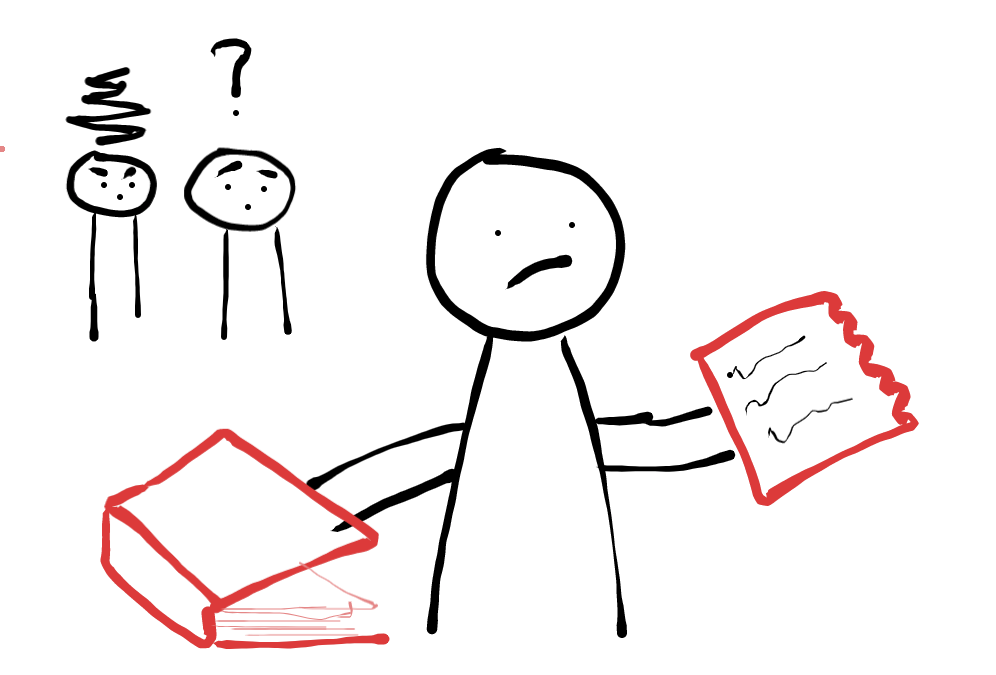
Oct 18, 2019 | Summer Experiences
Helen Liu (V)
The speaker at the podium––let’s call him A––gave his speech, charged with emotion. I never knew he could write like this, I thought, as I clapped along with my friends at the particularly touching parts. I didn’t know A that well—he was in a separate friend circle at that point—but the works he shared in our summer writing class had always been deeply personal. They were sharp and honest declarations of his cultural identity and body image, but they had never been as carefully planned and brilliantly executed as this one.
Later that night, after everyone finished presenting, my entire friend group crowded into one room and started discussing all the orations we’d heard. We loved Elijah’s speech, Annie’s story was beautiful, and A did so well; did you know he could write like that? Those that had presented were congratulated, and those that hadn’t yet were encouraged to do so next week. This was a writer’s workshop after all. Nobody would judge us, as long as we did our best.
There was a knock on the door and a classmate stepped in, looking frazzled. “Uh, hey, sorry, I didn’t want to bother you guys, but my friends are getting all caught up in drama right now, and I don’t really want to get involved.” She shut the door behind her, looked around, and continued in a hushed voice. “Did you know that A plagiarized his entire speech off Youtube?”
It was true. The word choice, the inflection in tone, the pauses every few sentences. A had copied almost every single thing. He didn’t own up to it fully; when the truth caught up to him, he claimed that he found the speech online in his native language and had translated it. He apologized for plagiarizing and promised that he wouldn’t do it again. Yet a week later, when we were sharing pieces for our class anthology, he read a piece that one of my friends had previously shown me online. After finishing, he looked at me with a smile and said, “I spent a lot of time on this, taking inspiration from all different parts of my life. Did you like it?”
I smiled back, genuinely, but a little sad. “Of course. It’s beautiful.”
I should’ve been angry. He was lying straight to my face; he broke his promise and my already-wavering trust in him as a friend. Though, with A, I realized I couldn’t even be annoyed.
One of the first pieces he had shared in class was one he had written during a free-writing session. He talked about his childhood as an immigrant and the self-hatred that developed because of it. He wished he had blonde hair and blue eyes when he was young, and later he despised his body altogether. He was insecure about his English and had always felt out of place. It wasn’t until high school, he said, that he began to understand that he should love himself for who he was; in his words, he was “a star that shone and could help other people shine too.”
He would randomly compliment people in class and was always the first to declare with a grin that our writing was beautiful or that we were the nicest people he’d ever met. The last night at the workshop, he hugged me, urged me to stay in touch, and thanked me for being his friend.
So, even though A plagiarized and lied, all I could do was hope that he became more confident in himself. I’m sure he knew what he was doing was wrong—he was just too insecure to stop. After all, in class, he’d always jokingly-but-not-so-jokingly deprecate his own work. The idea of showing it to other people, let alone presenting it to an entire camp, must have been terrifying. I couldn’t be angry at him. Sure, I was a little disappointed, but mostly, I felt bad for him. Taken without context, this seems ridiculous. Why would I feel bad for someone who plagiarized, promised he wouldn’t do it again, and then broke that promise?
I felt bad because that’s not all who A was. I barely knew him, yet I could tell he was optimistic, cheerful, and the type of person who wanted to make those around him happy, even while struggling with his own happiness. To reduce him to a plagiarizer—that would be ridiculous.
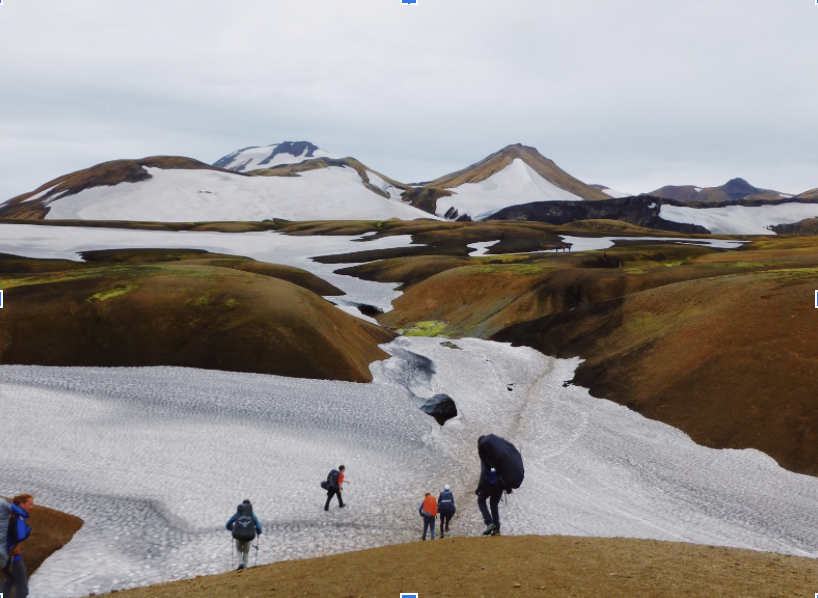
Oct 18, 2019 | Summer Experiences, Uncategorized
Maile Winterbottom (V)
In the midst of some last-minute scrambling to put my summer plans together last April, I quickly scrolled through possible programs and trips I could attend. I came across a two week trip to Iceland held by Overland Summers, a program that takes kids on trips led by college students. It was a backpacking trip, something I was interested in undertaking, and I was up for the challenge. So I clicked “register” and embarked on the journey.
When the day came for me to leave, I was a nervous wreck. I wondered what I got myself into. I thought my two years as an avid Pingry Outing Club participant would prepare me for this, but as the trip grew closer, the thought of strapping my belongings to my back for two weeks in a foreign country felt like something I could never do. Nevertheless, I hopped on the plane to Reykjavik (Iceland’s capital) with my half broken-in hiking boots and didn’t look back.
As soon as I met my group of nine other high school students and two college students (who led the trip), my anxiety that had built up over the weeks prior seemed to dissipate. We settled down at a campsite in Reykjavik on our first night and prepared for the next week, which we would spend backpacking. We would through-hike the Laugavegur trek, a fifty-mile trail popular among tourists in Iceland. I had never done anything like it before.
Although the nerves were sinking in, the girls that I had met just a day ago were already turning out to be my close friends. We talked about our lives back home, our concerns for the trip, how much we missed home, and so much more. There were four girls including me on the trip, and every night we would go into a tent and talk for at least an hour about everything that happened that day, and any other things that were on our mind.
When we arrived at the start of the Laugavegur trek, my anxiety for backpacking had returned, especially after our leaders told us that the first day would be the hardest day of the trip, with ten miles of ground to cover and many difficult uphills. My pack was heavy with food for the group, my clothes for the next week, my tent, and my sleeping bag (weighing forty pounds altogether!). As it turned out, the forty pounds on my back didn’t hold me back from having a great first day on the trail. The ten miles, although difficult, left me feeling accomplished, and the views added to my sense of achievement. When we got to the second campsite, we had pad thai for dinner and played cards, as we continued to bond with our group.
The rest of the trip proved to be one of the most breathtaking and formative experiences I’ve ever had. I met so many different people from different backgrounds and hearing their stories brought me to tears on several occasions. The trail was tough, but it brought us together as a group. Sometimes, completing even the smallest obstacles, like crossing a river or making it to the top of a steep hill, were so gratifying for me. At the end of every day, when I would take off my pack and look back on the miles I just hiked, I thought of the songs I sang, the stories I told and heard, and even the lunch I had, all the while thinking of how grateful I was to be in such a beautiful place.
My trip to Iceland left me feeling humbled by the outdoors and even more appreciative of our environment. In addition, I made some great bonds with the people on my trip who I’m still in contact with. The raw beauty of everything I saw along the way was incomparable to anything I’ve ever seen and taught me more than I have ever learned in the classroom, with concrete walls and fluorescent lighting. It made me realize the importance of embracing nature and taking that leap into the unknown.
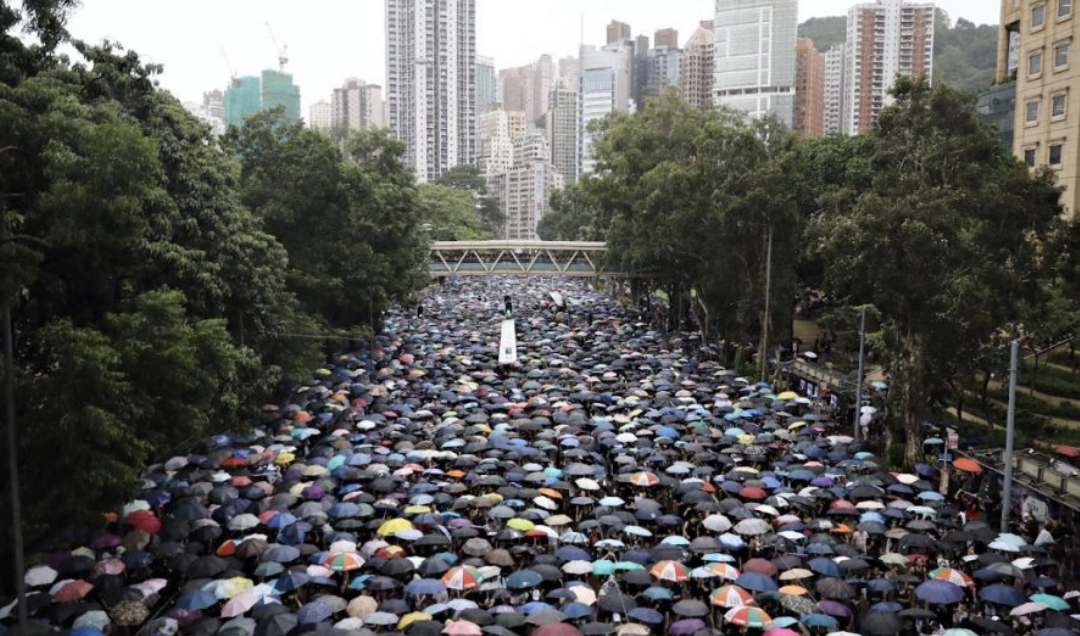
Oct 18, 2019 | Andrew Wong, Summer Experiences, Uncategorized
Andrew Wong (IV)
As my freshman year approached its finale of final exams, I looked forward to a summer of rest and relaxation.
Half a world away in Hong Kong, students were also busy preparing for their exams and their summer. Unlike me, though, they were ready to forsake their fun summer activities and travel plans this year for something they all knew was more important than a trip abroad. On June 9, 2019, a few days after the school year ended at Pingry, hundreds of thousands of students took to the streets of Hong Kong, on a hot, humid afternoon.
Why?
Hong Kong, formerly a British colony, was handed back to China in 1997. As part of the handover, Hong Kong was allowed to have “a high degree of autonomy,” with the ability to “enjoy executive, legislative, and independent judicial power” until 2047, when it would become fully integrated into China.
However, since the handover, this autonomy has steadily eroded. As seen in the last five years, with the barring of six pro-democracy lawmakers from local elections, the kidnapping of local booksellers by the Chinese government, and the arrests of prominent student activists, it has become all too clear that mainland China had been encroaching on Hong Kong’s sovereignty.
In March 2019, Carrie Lam, Hong Kong’s Chief Executive, proposed a bill that would allow fugitives in Hong Kong to be extradited back to mainland China to stand trial in the Chinese judicial system, an opaque legal system with a conviction rate of 99.99%. Many Hong Kongers were outraged by this extradition bill. They could no longer afford to sit and watch their government appease Beijing’s hunger for power.
In early June, a summer of revolution began. One million Hong Kongers swarmed the streets, followed by two million the next week, all demanding that the extradition bill be withdrawn. Despite this, Carrie Lam refused to withdraw the bill.
After a long July of violence, which saw protestors storm the Legislative Council, innocent students viciously attacked by triads in a suburban train station, and a young nurse providing first aid to protestors have her eye shot out by the police, I arrived in Hong Kong. Arriving at the airport, I saw young student protestors, not much older than myself, handing out flyers detailing the various instances of police brutality and the corruption of the Hong Kong government. Later that night, I watched on the news as riot police stormed into the airport while elsewhere in the city, tear gas and rubber bullets were fired into crowds of young protestors.
I was shocked. Why must these students spend their valuable summer risking their lives, while we get to spend our summer lounging on the beach or at home in peace? What is it that prompts an entire generation to rise up in open revolution?
The day school started, on September 4th, I heard the news that everyone in Hong Kong had longed to hear for the last three months––the extradition bill would finally be withdrawn.
It was too little, too late. Since the start of the protests, 2,000 people have been injured, 1,500 people from ages 12 to 75 have been arrested, and there are rumors that some protestors have died as a result of police brutality.
Returning to Pingry, I found peace on campus. I saw students going about their day without the burden of anxiety that comes from tyranny and oppression. In comparing the settings of my summer and my normal life, I realize just how valuable freedom is.
I am proud of the fact that I stood with Hong Kong in the fight for liberty this summer. In August, I was part of the “Peaceful, Rational, and Nonviolent” march, organized by the Civil Human Rights Front in response to weeks of constant police brutality against civilians. I saw the full unity of Hong Kong on display that day, where 1.7 million people of all ages, from little babies in strollers to the elderly, came out despite torrential rain. With chants of “Fight for freedom! Stand with Hong Kong!” and “Hong Kongers! Keep going!” our march pushed forward while a heavy monsoon poured. The scenes that played out that day deeply moved me. It was a powerful display of resistance and perseverance from ordinary Hong Kongers against the abusive power of mainland China.
For many Hong Kongers, what they hope can be achieved as a result of months of struggle can be perfectly summed up in the lyrics of “Glory to Hong Kong,” which has become the anthem of the Hong Kong protests. The song grants hope: “We pledge, no more tears on our land. In wrath, doubts dispelled, we make our stand. Arise! All ye who would not be slaves again: For Hong Kong, may Freedom reign!”
There is still a long road ahead and more months of struggle for the protesters. However, I, along with many other Hong Kongers, hope that in the end, the struggle for freedom will triumph.
光復香港!
時代革命!
香港人加油!
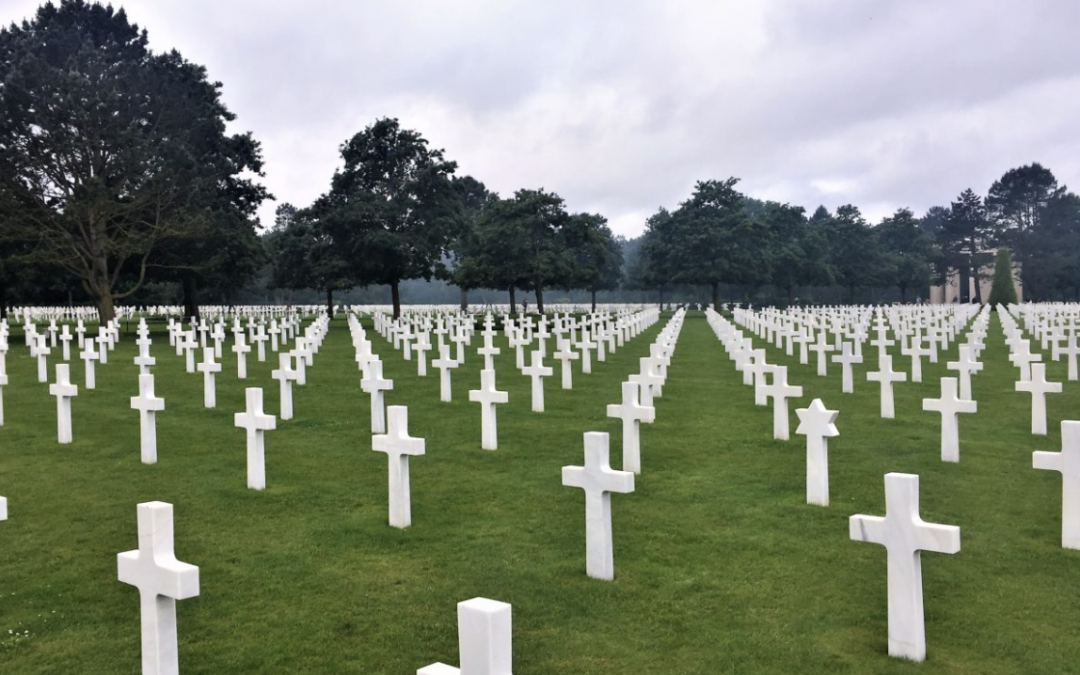
Oct 18, 2019 | Summer Experiences
Ava Kotsen (V)
June 6, 2019 was a lot of things. For many students and faculty at Pingry, it marked the final day of the school year, and the beginning of summer. It also marked the 75th anniversary of the Allied Powers’ Normandy invasion and the battle that ensued––an event more commonly referred to as “D-Day.”
A memorial took place in Normandy, and leaders such as Queen Elizabeth of United Kingdom, French President Emmanuel Macron, Canadian President Justin Trudeau, President Donald Trump, and the Chancellor of Germany, Angela Merkel, attended. These world leaders came together to remember the day that 156,000 Allied troops, 73,000 of whom were American, stormed Omaha, Utah, Gold, Sword, and Juno beaches along the coast of northern France to begin the major Allied invasion of German-occupied country, ultimately leading to the end of the war.
Many historians argue that this was the single most influential battle that ended World War II and Nazi control in Europe. Of course, this victory came at a hefty price––thousands of brave men were mercilessly slaughtered in an attempt to restore freedom to the shores. The waters of the Omaha were tainted red with their blood. The beach sands contained their torn limbs. The seabeds hold the wrecks of many amphibious tanks that never made it to land and the bodies of soldiers who drowned due to the weight of their gear.
During the summer, I had the opportunity to visit Omaha and Utah beaches as well as the United States Cemetery. When I visited Normandy in August, over seventy five years after D-Day, I was looking back on the shores where this very scene had taken place. No signs remained of the brutal battles that had occurred there. Normandy is now known as the most popular vacation beach in northern Europe, a title that it regained when the war ended. Upon my arrival, I was almost horrified to find children laughing and playing in the sand, splashing in the water. Dogs dashed across in long strides, barking contently. Folks socialized and enjoyed themselves. How could all of these people do this knowing what had happened there? Where has it all gone? Massive craters lay in the ground where bombs had exploded, and here and there were a few German bunkers that were still in working order.
I went to the cemetery that held the US soldiers who died overseas in the invasion of Europe during WWII. There was a walkway with a little platform overlooking Omaha beach. People were moving around, talking, laughing, smiling, and snapping photos. They were so light and carefree. I walked to the platform, and looked down through the green and grass-filled hill that led to the water. I went into a state of calm and silence, away from the rest of the world. I just stood there and stared at the ocean. I could hear the waves rolling on the beach.
Somehow, I could sense the spirits of the thousands of the heroic men who had died here. I could feel the presence of each one buried here. I could hear their silent weeping, their endless pain and the suffering that they had endured, the gruesome memories that they carried with them. Each one of them are my brothers, fellow Americans, and I carried their grief with them. I began to cry and weep with them. That day, I was able to see something powerful––the eternal spirit of America’s “greatest generation.” The souls of the warriors who will never forget the events of June 6, 1944, and WWII.
After visiting the cemetery, we returned to the edge, the final stretch, of Omaha beach. There was a sculpture called “Les Braves” (The Brave) built into the sand, facing the ocean. It was midday, not yet low tide, and still the strip of sandy beach extended a good distance outward. I slowly walked through the sand, to the approaching waves. I touched my hand to the cold water. I carefully took an empty water bottle and filled it. Within assorted shampoo bottles, I smuggled this water back home to me upon my return. To me, this water symbolizes the selfless sacrifice that thousands of courageous and bold young soldiers made for American freedom.
Even today, 75 years after the event, I honor the men who lost their lives in the historic D-Day invasion.
Nov 17, 2018 | Featured, Summer Experiences
By Chase Barnes ’21
There were many constants for me this summer. Begrudgingly rolling out of bed every day at 6 AM, relentless heat and humidity, crazy parents, and, of course, children. This summer, for seven weeks, I was a camp counselor at a local YMCA. Reflecting on my experience, I think about all the times I complained and how close I was to quitting after three weeks. It was a lot of responsibility and repetition mixed with some stressful unpredictability, and at some points I just couldn’t take it. At the same time, I honestly cannot put into words how amazing it was to have so many positive, and sometimes quite strange, interactions with parents and kids over the course of those seven weeks. Some of those experiences were so crazy that you wouldn’t even believe me. Just trust me on this one; I have quite some stories to tell from that camp.
And while there were both highs and lows, I learned a lot about myself as well as about working with other people. I feel that I have become more proactive, flexible, and patient. One day it would be sunny all day, and then at noon it would start pouring, so we had to spontaneously figure out what activities to do next. Day by day, situation by situation, we had a responsibility to continue the fun for the kids. I guess this is a good transition into the rather poor management of the camp itself. From what I heard from returning counselors, there was really no organization and activities were not thought out very well. Luckily, the kids didn’t notice, but there were times during the day when we, the counselors, literally had nothing to do with the kids. We would have to make up a game or find another activity to do because we weren’t provided with a great schedule or alternative activities. For example, one of the themes of the summer was STEM, and every Wednesday we were supposed to do some science-related arts and crafts. By that I mean we did one arts and crafts project the first week, and the rest of camp there was no activity.
It all cycled back to a lack of proactiveness, considering that what we did do instead was go to the playground for three hours and watch the kids tire themselves out until it was time to go home. Another day, one of my campers was stung by a bee and while she was screaming and crying the other campers were crowding around us and jumping around yelling, “Chase, Chase, Chase.” I had to deal with all of the kids as well as write an incident report, call a parent, and take the stinger out of her leg.
This was one of the many challenging situations I faced at the camp, but of course, everything worked out in the end. I learned quite a lot and wouldn’t change it for anything. I made a lot of friends, met a lot of great kids, and went to places I’ve never been. For that, I can say it was a good experience.
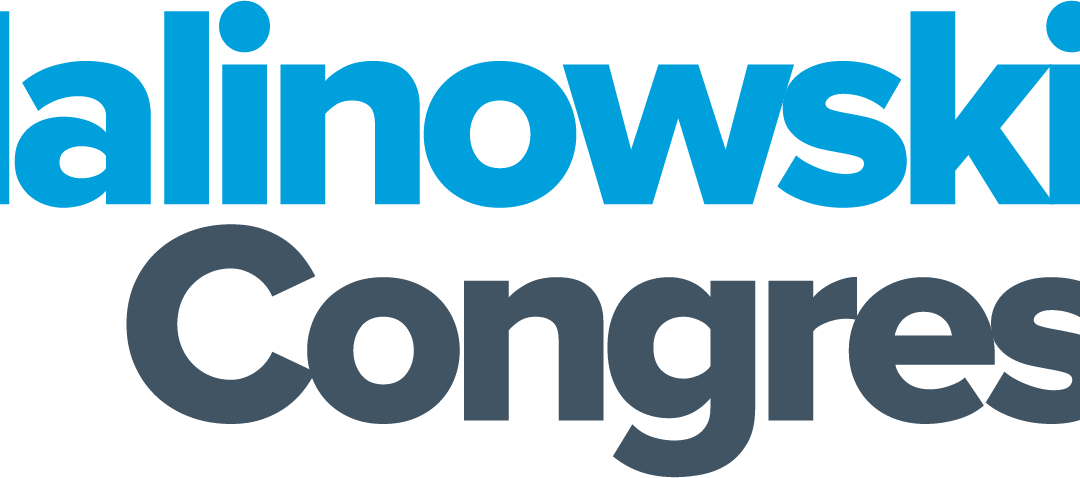
Nov 17, 2018 | Featured, Noah Bergam, Summer Experiences
By Noah Bergam ’21
In the last few weeks of summer, as bored as anyone on a lazy August afternoon might be, I decided to intern at my local Democratic congressional campaign.
In some ways, I felt pressured; my parents kept telling me I should try something new – something that was not about technology or robotics. I was hesitant at first, although deep down I felt that taking a break from my tech-oriented agenda would be good for me. I have always had an interest in politics, which had thus far only manifested itself in reading news on my phone. I decided to take that a step further.
Ironically enough, upon starting my internship, I felt more robotic than I had ever before. Upon my entrance into the paper, poster, and map-ridden headquarters, barely welcomed and surrounded by strangers who seemed to know exactly what they were doing, I was immediately tasked with three and a half hours of phone banking.
Without knowing much of my candidate’s policies aside from the fact that he was a Democrat, I was responsible for calling lists of possible voters (most of whom did not pick up), and convincing them to vote for Tom Malinowski. I was equipped with a script, mediocre conversational skills, and a roughly ten-minute training.
It was a humbling experience. I had always seen politics as something uplifting, something active that puts you in the news and brings about change in society. However, I had somehow found myself here, on the bottom of the campaign staff hierarchy, making calls to convince people to vote for a man I had never met, who I supported (at least in the beginning) solely due to a (relatively weak) party affiliation.
Call after call (and house after house, when we went into the real world for canvassing), I discovered so many different people and reactions. I proved to myself the importance of slow and clear speaking, welcoming body language, and smiling and staying optimistic even when faced with challenging reactions.
I also spent time during my lunch breaks learning more about my candidate’s politics through online articles and conversations with fellow interns. In doing so, I came to better appreciate the cause for which I was fighting. I was more determined accomplish my task of contacting voters. I might not be Tom Malinowski, but I could still appreciate the fact that my work might make a difference in who represents my congressional district next year. And if not, so be it. I would still get so much more out of the experience than that.
Calls and canvases became personal endeavors; I was no longer a robot, but a dedicated person trying to respectfully convince others of my beliefs. That is a skill that I appreciate developing– making a difference in the world means changing minds, little by little, and this internship was just the beginning.
As I continue to volunteer with the campaign, I am more than ever glad that I took the chance apply myself to it in the first place. I feel that my work is rewarding, not only because Tom Malinowski may win a spot in Congress this November, but because of my own personal confidence, rhetoric, and knowledge of American politics have benefitted.
If I learned one thing with the campaign, it’s there’s always more to discover once you leave your comfort zone. I was able to pick up on skills that I now know I was lacking in the past because I dove into my personal unknown.








